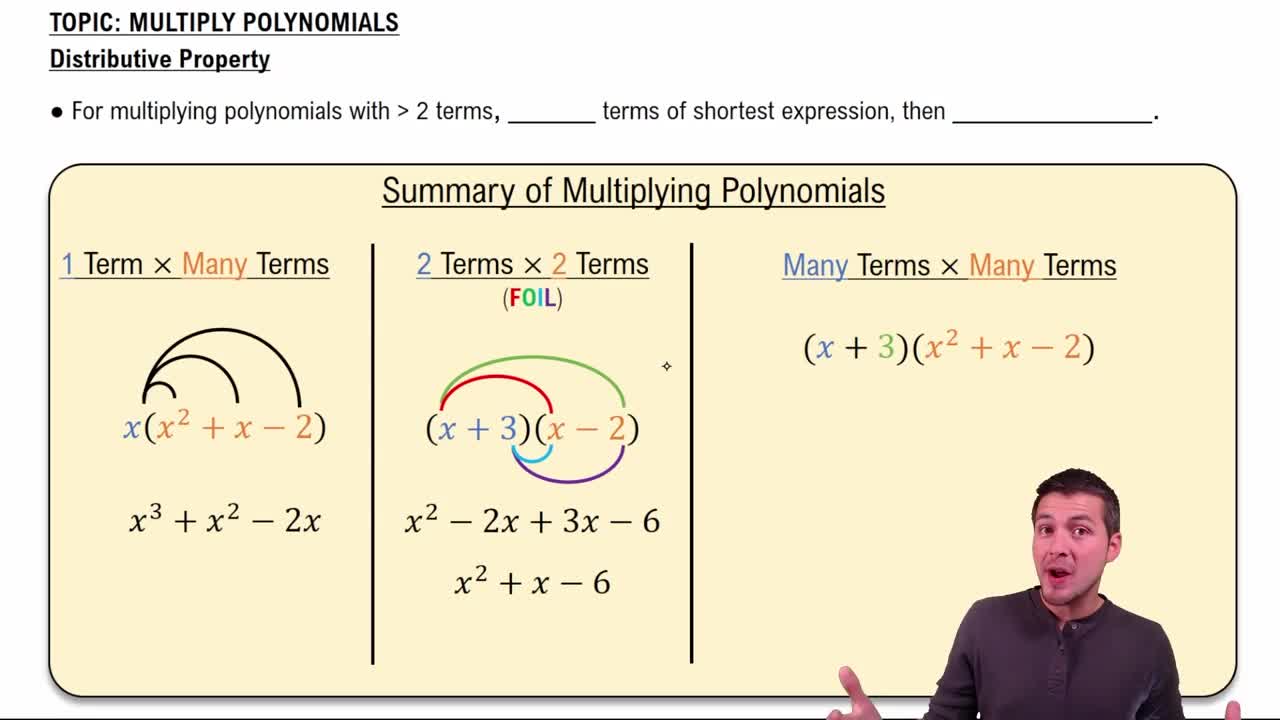Here are the essential concepts you must grasp in order to answer the question correctly.
Greatest Common Factor (GCF)
The Greatest Common Factor (GCF) is the largest integer or algebraic expression that divides two or more numbers or terms without leaving a remainder. To find the GCF, one can list the factors of each term and identify the highest one that appears in all lists. For example, in the expression 12m + 60, the GCF is 12, as it is the largest factor common to both terms.
Recommended video:
Graphs of Common Functions
Factoring Polynomials
Factoring polynomials involves rewriting a polynomial as a product of its factors. This process simplifies expressions and can make solving equations easier. In the case of 12m + 60, factoring out the GCF (12) results in 12(m + 5), demonstrating how the polynomial can be expressed in a simpler form.
Recommended video:
Introduction to Factoring Polynomials
Distributive Property
The Distributive Property states that a(b + c) = ab + ac, allowing us to distribute a factor across terms within parentheses. This property is essential when factoring, as it helps verify the correctness of the factorization. After factoring 12 from 12m + 60, one can use the distributive property to expand back to the original expression, confirming that 12(m + 5) equals 12m + 60.
Recommended video:
Multiply Polynomials Using the Distributive Property
 Verified step by step guidance
Verified step by step guidance Verified video answer for a similar problem:
Verified video answer for a similar problem:



 7:30m
7:30m